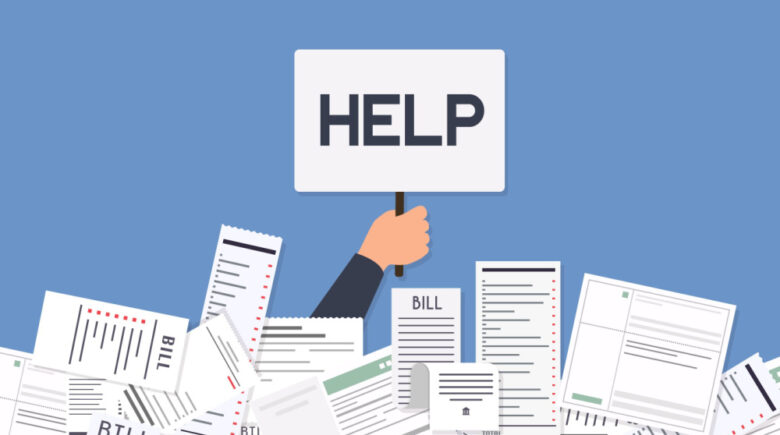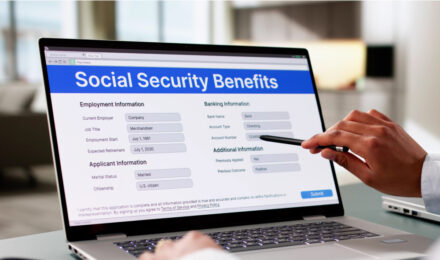Table of Contents
Energy expenses can consume a significant portion of a household budget, particularly for families with limited income or those facing unexpected financial hardship. Fortunately, a range of federal, state, and nonprofit programs exist to ease this burden. This article outlines key assistance options, eligibility criteria, application procedures, and supplementary strategies to help you reduce and manage energy costs effectively.
Understanding Key Assistance Programs
Several prominent programs offer financial aid or discounts on energy bills:
- Low Income Home Energy Assistance Program (LIHEAP)
LIHEAP provides grants to eligible low-income households for heating and cooling costs, energy crisis assistance, weatherization, and minor home energy repairs. Funds cover electricity, natural gas, heating oil, propane, and, in some areas, wood or coal. The program aims to prevent service shut-offs and address immediate home energy needs to safeguard health and safety. acf.gov - Weatherization Assistance Program (WAP)
WAP focuses on long-term energy savings by providing free home energy upgrades—such as insulation, air sealing, and efficient heating and cooling systems—to income-qualified households. Improvements can reduce utility bills by up to 35 percent over time. usa.gov - State and Local Utility Discounts
Many utilities offer discounted rates or bill credits for seniors, veterans, people with disabilities, and customers facing financial crises. Eligibility, benefit levels, and application processes vary by jurisdiction and provider. 211.org
Determining Eligibility
Eligibility for most energy assistance programs is based on household income relative to the federal poverty level (FPL) or state-defined thresholds. Common criteria include:
- Income Limits: Typically set at 150 percent of the FPL, though some states allow up to 200 percent.
- Household Composition: Priority often given to households with elderly members, persons with disabilities, or young children.
- Crisis Conditions: Programs may expedite assistance when service disconnection is imminent or during extreme weather events.
For precise income limits and qualifying conditions in your area, contact your state’s LIHEAP office or local community action agency. usa.gov
How to Apply for Assistance
Application procedures differ by program and location, yet generally follow these steps:
- Locate Your Local Agency
Use the USA.gov utility bill assistance locator to find the appropriate LIHEAP and WAP office in your state. usa.gov - Gather Required Documentation
- Proof of household income (pay stubs, tax returns, benefit statements)
- Identification for all adult household members
- Utility bills or disconnection notices
- Social Security numbers or proof of legal residence
- Submit an Application
- Online: Many states offer web portals for uploading documents and completing forms.
- By Mail or In Person: Download and mail paper applications or visit community action agencies.
- Phone: Some offices accept applications via telephone, especially for crisis assistance.
- Await Determination
Processing times vary; emergency grants may be disbursed within days, while regular benefits often take several weeks. Stay in contact with your agency to check the status of your application.
Additional Aid and Discounts
Beyond LIHEAP and WAP, consider these options:
- Utility Payment Plans:
Many providers offer no-interest, deferred payment arrangements that spread outstanding balances over several months without extra fees. cedaorg.net - Nonprofit and Charitable Support:
Organizations such as The Salvation Army and United Way operate local funds offering one-time grants to prevent shut-offs or restore service. Contact 211 for referrals. 211.org - Lifeline Program:
Federal assistance that provides discounted or free phone and internet services for qualifying low-income households, which can indirectly reduce household expenses. usa.gov
Maximizing Energy Savings at Home
Implementing simple efficiency measures can further reduce costs:
- Seal gaps around windows and doors to prevent drafts.
- Install programmable thermostats and set conservative temperature schedules.
- Replace incandescent bulbs with ENERGY STAR® LED alternatives.
- Maintain heating and cooling systems with regular filter changes and professional tune-ups.
While these actions may require modest upfront investment, many local programs offer rebates or voucher incentives for energy-efficient upgrades.
Preparing for Future Assistance Needs
To ensure continued access to support:
- Reapply Annually: LIHEAP funding is limited and renewed each year; mark your calendar for the next application window.
- Monitor Utility Communications: Respond promptly to any disconnection notices or rate change alerts.
- Stay Informed: Sign up for utility newsletters or community agency mailing lists to learn about new programs and deadlines.
Conclusion
Navigating energy assistance can feel overwhelming, yet a combination of federal, state, and local resources exists to help eligible households manage and lower utility costs. By understanding program options, gathering necessary documents, and applying early, you can secure critical support. Complement financial aid with energy-saving practices to maximize benefits and establish lasting reductions in household expenses.
References
- Administration for Children and Families, Low Income Home Energy Assistance Program, U.S. Department of Health & Human Services. acf.gov
- USA.gov, Help with Utility Bills. usa.gov
- United Way 211, Utilities Expenses Assistance. 211.org
Table of Contents
Energy expenses can consume a significant portion of a household budget, particularly for families with limited income or those facing unexpected financial hardship. Fortunately, a range of federal, state, and nonprofit programs exist to ease this burden. This article outlines key assistance options, eligibility criteria, application procedures, and supplementary strategies to help you reduce and manage energy costs effectively.
Understanding Key Assistance Programs
Several prominent programs offer financial aid or discounts on energy bills:
- Low Income Home Energy Assistance Program (LIHEAP)
LIHEAP provides grants to eligible low-income households for heating and cooling costs, energy crisis assistance, weatherization, and minor home energy repairs. Funds cover electricity, natural gas, heating oil, propane, and, in some areas, wood or coal. The program aims to prevent service shut-offs and address immediate home energy needs to safeguard health and safety. acf.gov - Weatherization Assistance Program (WAP)
WAP focuses on long-term energy savings by providing free home energy upgrades—such as insulation, air sealing, and efficient heating and cooling systems—to income-qualified households. Improvements can reduce utility bills by up to 35 percent over time. usa.gov - State and Local Utility Discounts
Many utilities offer discounted rates or bill credits for seniors, veterans, people with disabilities, and customers facing financial crises. Eligibility, benefit levels, and application processes vary by jurisdiction and provider. 211.org
Determining Eligibility
Eligibility for most energy assistance programs is based on household income relative to the federal poverty level (FPL) or state-defined thresholds. Common criteria include:
- Income Limits: Typically set at 150 percent of the FPL, though some states allow up to 200 percent.
- Household Composition: Priority often given to households with elderly members, persons with disabilities, or young children.
- Crisis Conditions: Programs may expedite assistance when service disconnection is imminent or during extreme weather events.
For precise income limits and qualifying conditions in your area, contact your state’s LIHEAP office or local community action agency. usa.gov
How to Apply for Assistance
Application procedures differ by program and location, yet generally follow these steps:
- Locate Your Local Agency
Use the USA.gov utility bill assistance locator to find the appropriate LIHEAP and WAP office in your state. usa.gov - Gather Required Documentation
- Proof of household income (pay stubs, tax returns, benefit statements)
- Identification for all adult household members
- Utility bills or disconnection notices
- Social Security numbers or proof of legal residence
- Submit an Application
- Online: Many states offer web portals for uploading documents and completing forms.
- By Mail or In Person: Download and mail paper applications or visit community action agencies.
- Phone: Some offices accept applications via telephone, especially for crisis assistance.
- Await Determination
Processing times vary; emergency grants may be disbursed within days, while regular benefits often take several weeks. Stay in contact with your agency to check the status of your application.
Additional Aid and Discounts
Beyond LIHEAP and WAP, consider these options:
- Utility Payment Plans:
Many providers offer no-interest, deferred payment arrangements that spread outstanding balances over several months without extra fees. cedaorg.net - Nonprofit and Charitable Support:
Organizations such as The Salvation Army and United Way operate local funds offering one-time grants to prevent shut-offs or restore service. Contact 211 for referrals. 211.org - Lifeline Program:
Federal assistance that provides discounted or free phone and internet services for qualifying low-income households, which can indirectly reduce household expenses. usa.gov
Maximizing Energy Savings at Home
Implementing simple efficiency measures can further reduce costs:
- Seal gaps around windows and doors to prevent drafts.
- Install programmable thermostats and set conservative temperature schedules.
- Replace incandescent bulbs with ENERGY STAR® LED alternatives.
- Maintain heating and cooling systems with regular filter changes and professional tune-ups.
While these actions may require modest upfront investment, many local programs offer rebates or voucher incentives for energy-efficient upgrades.
Preparing for Future Assistance Needs
To ensure continued access to support:
- Reapply Annually: LIHEAP funding is limited and renewed each year; mark your calendar for the next application window.
- Monitor Utility Communications: Respond promptly to any disconnection notices or rate change alerts.
- Stay Informed: Sign up for utility newsletters or community agency mailing lists to learn about new programs and deadlines.
Conclusion
Navigating energy assistance can feel overwhelming, yet a combination of federal, state, and local resources exists to help eligible households manage and lower utility costs. By understanding program options, gathering necessary documents, and applying early, you can secure critical support. Complement financial aid with energy-saving practices to maximize benefits and establish lasting reductions in household expenses.
References







